- Home
- Weight loss
- Vegetable High in Protein
Vegetable high in protein
Vegetable high in protein is counter to a world hungry for more animal products. In the West there is a decline in the demand for pork and beef; but that for chicken and fish is rocketing.
Broad beans are the richest vegetable high in protein after soyas; they are also the best source of L-dopa. A couple tablespoons per day is enough to supply many Parkinson's patients with sufficient of this hormone. The bright white flowers with their black centres are beautiful.
How to plant broad beans is for all of us who want to live a long life free from the degenerative neurological diseases.
Type "how to plant broad beans" above in Site Search in the main menu.
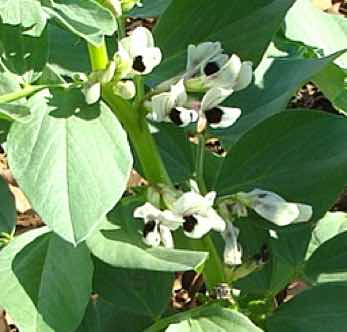
This page was last updated by Dr Barrie Lewis on 9th February, 2023.
Cattle can get much of their protein from grass by ruminating but chickens and pigs rely on legumes for their amino acids; and in particular soyabeans.
For this reason the demand for vegetables high in protein for animal feed has risen by fifty percent in the last ten years; and will continue to soar.
But this page is not about animal feed; it concerns those humans who like their meat but want to get an increasing amount of protein from their veggies. That means legumes and more specifically pulses.
The World Health Organisation has recently declared, after scientists scanned the best research that processed foods like bacon are definitely a potential cause of metastatic disease; and all red meat "probably" is. (1)
And so the Western World is wisely slowly weaning itself off of burgers and turning to fish and fowl; a colorectal malignancy isn't pleasant.
Vegetable high in protein
Enjoy vegetable high in protein so you don't fall on your own sword; bacon every morning for breakfast, ham for lunch and a steak for dinner is not dissimilar.
Just how much red meat will not count against you remains undefined; perhaps twice a week but certainly not more than once a day.
Vegans won't be reading this page; they already know the answers. But if you like me enjoy red meat periodically but have a deep desire to reach old age without serious illness, then these are important matters to consider.
For the chiropractor those enjoying vegetable high in protein are also far less likely to be obese; that's important for the joints that we treat every day.
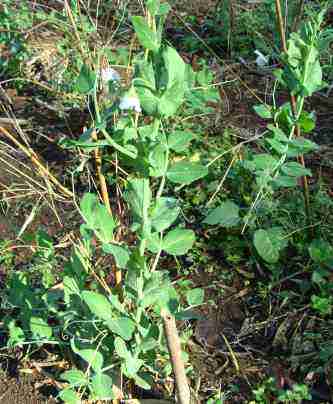
Pulses are those legumes that we humans can enjoy for our protein; they are found in pods like beans and peas.
Our hens in the garden go crazy over pulses but unlike us they can also get their protein from other legumes like alfalfa and clover.
2016 was officially the year of the pulses but really this whole century should have been dedicated to beans, peas and lentils.
Increasing world production of pulses at 50 percent every ten years as has been happening, just to be fed to animals isn't sustainable. Very soon, not because we choose to eat less red meat but since we are forced to, those legumes are going to be mainly for human consumption.
And that's not a bad thing. They are a far healthier source of protein than cattle and pigs; and substantially cheaper too. Grass fed on the range might be different but is increasingly unobtainable.
There are sound permaculture reasons for growing pulses for human consumption too; legumes require much less water from the environment than cattle, pigs and sheep.
Cattle need ten times as much water as growing vegetables high in protein.
One big plus about growing pulses, and legumes in general, is that nitrogen-producing bacteria attach to their roots, enriching the soil; lessening the need for inorganic fertilizers.
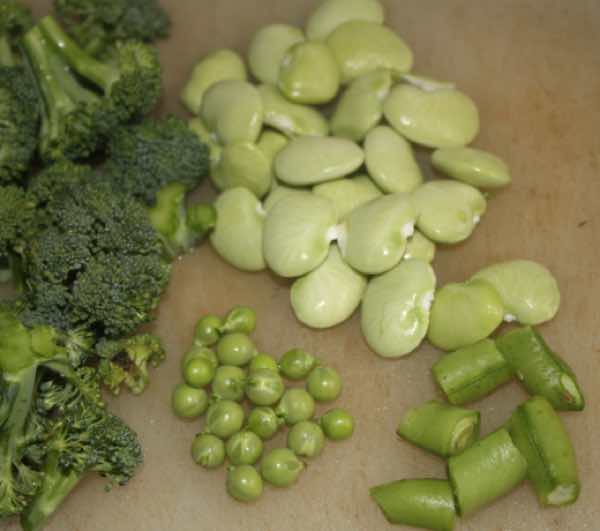 Lima beans, peas and sliced young fava pods; with broccoli
Lima beans, peas and sliced young fava pods; with broccoliAnother reason for enjoying vegetables high in protein is their fibre; pulses are rich in both forms. The soluble type is especially important as it absorbs water giving the stool bulk; they also reduce the absorption of animal cholesterol in the gut and stabilise blood sugar.
That's vital for all of us and not just diabetics; spikes in blood glucose provoke an insulin surge, storing the surplus as adipose tissue.
Pulses have a very low glycemic index; they have little effect on blood sugar when consumed.
That means that pulses can be enjoyed on the paleo diet but banters still must avoid them if they are following the rules to the letter; they must aim for less than 20g of carbohydrate per day. People who get much of their protein from legumes are rarely if ever fat.
There's plenty of research showing that both forms of fibre, also found in 100 percent whole grains, reduce colorectal tumours and other bowel diseases. It is also important for those undergoing chiropractic help for a slipped disc; bearing down on the toilet is very painful if constipated.
100 percent whole grains have a substantial amount of protein too, but typically half of that in pulses. However most flour is refined and has much less if any.
Broad beans have the largest amount of protein after soyas; about four times that of most other legumes.
Soyas are not popular generally unless fermented into tempeh; they are very high in anti-nutrients making them indigestible.

Pulses are particularly rich in the B vitamins; and many important minerals including the anti-oxidants, magnesium and zinc.
Women of child-bearing age need to be enjoying them for the large amount of iron they contain; a deficiency is the chief cause of what is being called "tired all the time" syndrome.
In short vegetable high in protein like our pulses play a very important role in preventing malignancies, obesity and type-2 diabetes; and heart disease too.
Probably my favourite green pulses are beans and peas; and dried garbanzos for making hummus.
We plant broad beans because they are so easy to grow in both spring and autumn, and are the highest in vegetable protein; reap them when they are still young and tender.
Tree nuts
Tree nuts too are rich in protein; what's more they are not contrary to popular belief particularly fattening, and are especially beneficial to those who are diabetic or suffering from metabolic syndrome. They help to stabilise the blood sugar.
Pecans nutrition is my favourite, though walnuts are especially high in omega-3 fatty acids; they help reduce inflammation in the body. Obviously that's also favourable to those undergoing chiropractic treatment.
Hens
The consumption of chicken meat has risen by over 50% since the turn of the century. Much of the legumes grown is going to feed the hens; they are particularly efficient converters of dietary amino acids thus the industry is demanding more vegetable high in protein for the fowls.
Kitchen food waste can be fed to worm farms which then make wonderful protein for chicken feed.
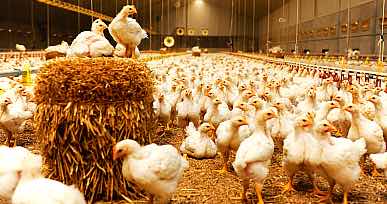
Which of these chickens would you rather enjoy for dinner? Actually we're not eating those below; we just enjoy their bright orange-yolked eggs. They are feasting on a couple of shovelfuls from the worm farm. But the young roosters get the chop.
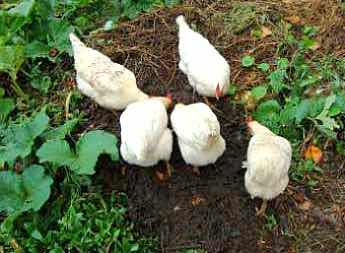
Chicken tractors
Egg-laying hens demand a lot of greens; one way to make plentiful vegetable waste available to them is by using these chicken tractors. Make sure they are placed over clover periodically for vegetable high in protein.
Their chicken litter provides a fertilizer high in nitrogen for your plants.
Nitrogen fixation bacteria
Proteins are made up of strings of amino acids.
They have an amine group which contains a nitrogen atom.
Lightening contributes nitrogen to the soil to a lesser extent.
It is the work of these bacteria on the roots of legumes that enables them to become a vegetable high in protein.
It's not a subject we want to hear but there is now abundant evidence that processed meat is definitely cancer-causing; it is in Group 1 along with tobacco and asbestos, though the risk is lower.
And ordinary red meat is in Group 2A and "probably" is. The WHO stresses that the evidence is not conclusive, as there could be confounding factors. The suggestion is that a 100 gram portion of steak say, eaten daily would increase the risk of colorectal tumours by 17%; particularly if the overall diet is also low in fibre.
So we are faced with introducing vegetables high in protein to the dinner table, or getting metastatic disease; it's not comfortable for me either, a lover of red meat. So, to our mutton stew we add chickpeas, bacon is kept for high an holy days and we never eat polony or frankfurters. You plot your own course.
Flexitarian
The flexitarian diet is for those who have no desire to give up all animal products, and want to get more from vegetable high in protein. Whilst not hard and fast, the goal is to have red meat no more than once or twice a week.
Fish and fowl are still on the menu.
Pancreatic cancer
N-nitroso compounds are potent carcinogens[3]; processed meats are usually preserved with nitrite; these chemicals can also be formed in the stomach from amides in foods of animal origin.
Overall there is a 19% increase in pancreatic cancer for every 50 g per day of processed meat.
However the risk for red meat overall appears to occur in men only; at a higher 29%. More research needs to be done, but clearly vegetable high in protein remains needs to remain strongly in focus.
And recognising that this research applies to the only red meat commonly available; from a feedlot; pasture-fed may be quite different.
Red and all processed meat is also strongly correlated with other gastrointestinal diseases; notably of the stomach and colorectal region.
For this reason we remain very skeptical of the carnivore and many of the keto diets that are fixated on getting protein from red meat.
"Pancreas cancer remains, unfortunately, a fearsome enemy for patients and oncologists alike."
- Dr Mark Lewis (American Society of Clinical Oncology 2023)
We remain committed to more protein from legumes in general; beans, peas and lentils, for example. Small amounts of pasture-fed beef remains an unresearched possibility; if you can find it.
When browsing these links use right click and "Open Link in New Tab", or you may get a bad gateway signal.
- Banting diet modified.
- Lentil protein.
- Chickpea Garbanzo bean dip also known as hummus.
Chiropractic
You may be asking why all this about vegetable high in protein on a chiropractic website? Those on an inflammatory diet do not respond as well to our treatment; or to any other for that matter.
- Home
- Weight loss
- Vegetable High in Protein
Did you find this page useful? Then perhaps forward it to a suffering friend. Better still, Tweet or Face Book it.

